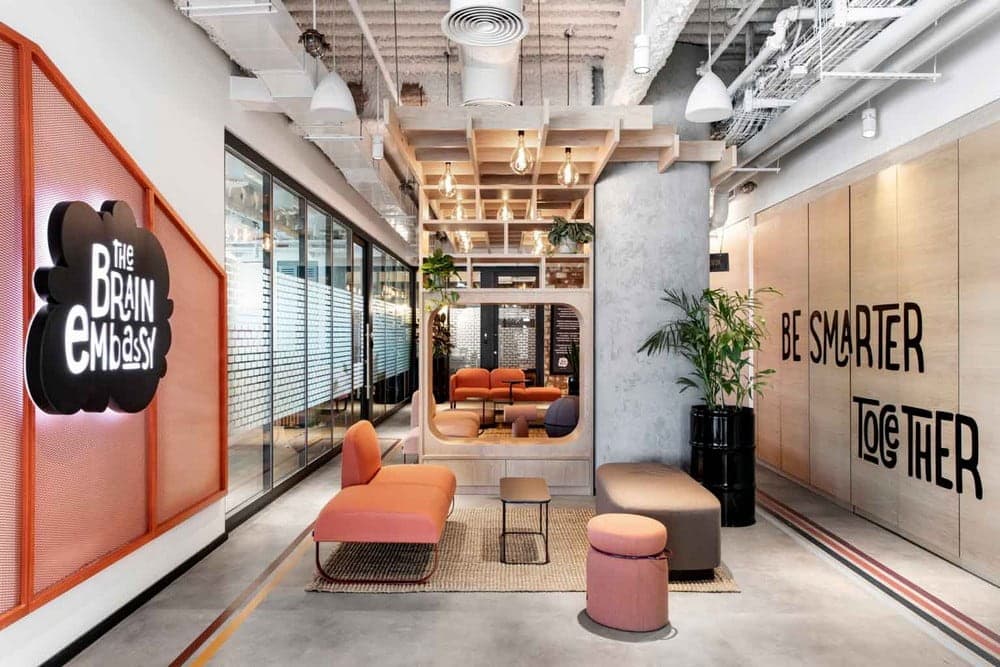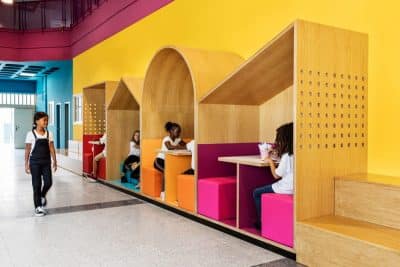
Interior design is not only about beautifully crafted aesthetics and functional spaces. It focuses on creating spaces that have a specific character, reflecting the needs, identity, and personality of the commercial property owner(s).
Whether it is a boutique, hotel, cafe, retail store, or office – interior design is one of the most effective ways to communicate a brand’s persona and values to its target audience. To stand out in the market, a business or an organization needs a strong brand identity that will make a lasting impression on its target audience. Having a higher recall value is what separates the extraordinary from the ordinary.
Establishing Brand Identity and Brand Presence Via Commercial Interior Design Elements
Brand-building is a sustained and continuous effort that a commercial property owner needs to engage in. Staggering interior design can create a brand buzz and a distinctive brand identity in the operating domain. Here are the different strategies that Aspen interior designers use to make a commercial design project memorable, impactful, and outstanding.
Strive to Create a Unique and Distinct Environment
In commercial interior design, the idea is to create a physical space where a brand operates. It is important to create a distinct, unique ambience, recognized as the cornerstone of effective interior design in commercial properties.
A proper ambience helps set the mood for the interior space. Effective lighting, the use of proper textural elements, the right furniture pieces, a color palette, and a focus on efficient spatial arrangement are some of the keys to achieving this.
Be it an office space, a cafe, or a retail store, using proper design elements can help evoke proper emotions from targeted customers and elicit the desired responses to the brand.
Align Designing Decisions with Brand Objectives
It is also important to streamline design decisions, keeping in mind the needs of the target audience meeting brand objectives. The brand’s values and missions and targeted consumer behavior/ preference should act as the blueprint for guiding the design process.
For instance, open spaces, sufficient daylight, and natural materials will be the priorities for a health and wellness brand. These can help promote tranquility and an overall sense of well-being. If it is a youth-focused brand, the focus will be on interactive elements, modern furniture items, and vibrant colors.
These help make an environment energetic and engaging. When the design is customized to resonate with a specific set of target audiences, it can help foster deeper connections. Brands can easily improve customer loyalty in this way.
Capture the Brand’s Essence with Every Design Aspect
The interior designers capture brand essence through every interior design aspect, including the layout, color palette, overall flow, and theme of the space. A cohesive design that reflects the brand’s identity helps reinforce its message and create a memorable experience for customers.
For example, earthy tones, natural light, indoor plants, and recycled materials will be the focus of a brand that embodies sustainability. However, a fashion brand may opt for artistic displays that reflect the latest trends, chic furnishings, and bold colors. When design elements aligning with the brand’s essence are selected with care, it can be easier to create an immersive environment.
Design Spaces that Reflect Brand Personality
Building brand identity can be easier by designing spaces that reflect a brand’s personality in its true essence. A brand’s values need to be evident in all corners of a commercial property. This can help reinforce the brand’s recognition and establish an emotional connection with employees and customers.
For instance, if a company focuses on community engagement, it may design an inviting reception space with comfy seats, local artwork, and information about community initiatives.
Alternatively, a brand focused on innovation may opt for collaborative workspaces and state-of-the-art technologies that inspire teamwork and creativity. When brand values are integrated into the design, it becomes easier to foster a sense of belonging among employees and customers. It can help to cultivate a stronger identity.
The word of caution is to skillfully know where to draw the line. Do not overdo things while hammering the brand essence into the minds of the target audience via distinct design elements. Hiring Aspen interior designers can help you get the best output.
Embossment Logo and Other Signature Brand Elements
Brand identity can be reinforced powerfully by integrating various signature brand elements into the interior design. The first step is to deftly use the logo. It is not a mere business sign that you can place anywhere- it represents a brand. It must be simple yet appealing, and the placements when planning your commercial space are very important.
It should be incorporated creatively into various design aspects, such as signage, wall art, and even furniture items and other supplies. Also, specific colors, textures or patterns, and other signature elements of the brand can be woven across the design. It can help create a recognizable, cohesive ambience. Ultimately, it helps improve brand visibility, strengthening brand recognition.
Let the Space Tell a Compelling Brand Story
A well-designed commercial space should tell a compelling brand story that is relatable and emphasizes personalization. The interior designers use artwork, specific features in the layout, and interactive displays to tell a story that the target audience can connect with. Emotions always make way for emotion, even in today’s world, no matter how detached or technically progressive we have become.
For instance, a gallery or museum can use curated exhibits and spatial design to share its history and mission. On the other hand, a retail store might prefer to create immersive experiences that can help leave its brand impression in the minds of its customers on a deeper level.
Brands can encourage happy customers to share their experiences with others. Word-of-mouth is the biggest promotion that makes a business a brand – so let the professional interior designers do it for you seamlessly.
Maintain Design Consistency Across All Brand Touchpoints
While building brand identity through interior design, it is important to be consistent. The focus should always be on maintaining harmony across all brand touchpoints, such as marketing materials, brand campaigns, online marketing efforts, and physical locations. It can help to create a unified impression on customers, reinforcing a brand’s curb appeal.
For example, design elements, typography, and color palettes in the physical space need to align with those visible on the promotional materials, social media, and website of the brand. With this streamlined approach, brand identity can be strengthened. Customers can also find, engage, and spread the word about the brand easily without it getting lost in the business ocean.
Keep Scope for Sustainability and Customization
As businesses evolve, flexibility should be a key consideration while designing commercial spaces. Keeping scope for sustainability and customization ensures that the space can adapt to changing needs and preferences over time.
Today, incorporating sustainable materials and practices into the design is not just about keeping up with the trend of going green. It not only reflects a brand’s commitment to environmental responsibility but appeals to eco-conscious customers. Further, a focus on personalization and customization – through flexible layouts, modular furniture or other elements – helps in creating spaces that can evolve with the progress route of a brand.
Bottom Line
Building brand identity through interior design in commercial properties is a multifaceted process. The top professionals in the field need to step in and use a strategic approach to create a unique space that reflects brand values and captures the brand’s essence in its entirety.
Aligning design concepts with brand objectives can offer a design project the right edge. A well-designed commercial space reflecting the specific traits of a brand’s personality can be a great medium to reinforce brand identity and form lasting relationships with customers. This goes a long way in ensuring long-term success in any operating domain.








